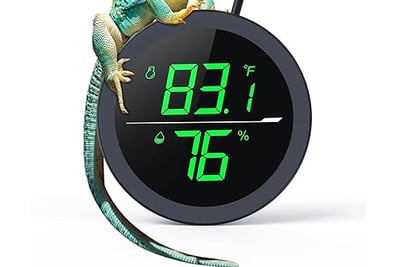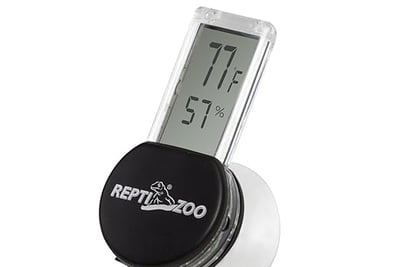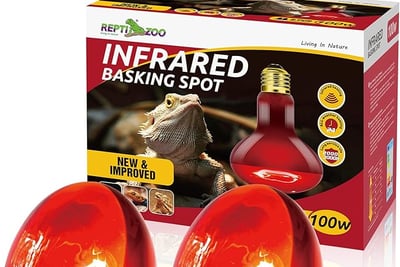Bringing Home a Reptile: Essential Necessities for Your New Pet
8 min read


Choosing the Right Reptile
When it comes to bringing home a reptile, prospective pet owners often face a wide array of choices, each offering unique characteristics and requirements. Common reptiles found in the pet trade include turtles, snakes, lizards, and geckos, each presenting distinct temperaments, habitat needs, and dietary requirements. Understanding these factors is crucial for making an informed decision that aligns with one’s lifestyle and experience level.
Turtles, for example, are often regarded as gentle creatures and can be a suitable choice for beginners. However, potential turtle owners should be aware of their need for aquatic environments and specific water quality conditions. Unlike turtles, snakes can vary significantly in size and temperament. Smaller species, such as corn snakes, are typically well-suited for novice owners due to their docile nature and manageable care needs. In contrast, larger species require more extensive enclosures and specialized care, making them more appropriate for experienced reptile enthusiasts.
Lizards also offer a diverse range of options. Bearded dragons, known for their friendly demeanor, can thrive in a family setting, while leopard geckos are generally low-maintenance, making them appealing to first-time reptile owners. Both species have specific habitat needs, including heating and humidity considerations, which must be met to ensure their well-being.
In selecting the right reptile, it is essential to consider factors such as the reptile's dietary needs, which can vary from live prey to prepared foods, as well as the level of interaction desired. Assessing your lifestyle, including time availability and budget, will further guide your decision. By carefully researching and reflecting on these elements, you can ensure a harmonious relationship with your new reptilian companion.
Setting Up a Proper Habitat
Creating a suitable habitat for your reptile is crucial for its overall health and well-being. The type of enclosure depends largely on the species of reptile you are bringing home; generally, there are two primary categories: aquatic and terrestrial. Aquatic reptiles, such as turtles, require a large tank filled with water that allows for swimming and basking areas. Conversely, terrestrial reptiles, like snakes and lizards, thrive in vivariums or terrariums that are appropriately sized to accommodate their movement and behaviors.
The choice of substrate, or floor material, is essential, as it not only affects the reptile’s comfort but also helps in temperature and humidity regulation. For various species, substrates can include reptile carpet, coconut coir, or natural soil mixtures. It is important to select a substrate that can replicate the reptile's natural environment while providing ease of cleaning and maintenance.
Heating and lighting are vital components in establishing the perfect habitat. Reptiles are poikilothermic, meaning they rely on external sources to regulate their body temperature. Utilize specific heat sources such as heat mats or basking lamps to create a temperature gradient where your reptile can choose to bask or retreat to cooler areas. Additionally, adequate UVB lighting is necessary for many reptiles to synthesize vitamin D3, often indispensable for their bone health.
Humidity is another essential factor that cannot be overlooked. Depending on the species, humidity levels should be tailored to mimic natural conditions. This can be achieved through the use of water dishes, frequent misting, or specialized humidity gauges. An ideal habitat not only promotes your reptile’s comfort but also reduces the risk of health issues, ensuring a long and healthy life for your new pet. In conclusion, by carefully considering these fundamental aspects, you will be well on your way to providing a safe and nurturing environment for your reptile.
Temperature and Lighting Requirements
When bringing home a reptile, understanding the importance of temperature and lighting is crucial for the health and well-being of your new pet. Reptiles are ectothermic creatures, meaning they rely on external sources to regulate their body temperature. This biological characteristic necessitates that reptile owners create a suitable environment that mimics their natural habitat to achieve optimal health.
One of the most significant concepts in reptile care is basking. Basking refers to the practice of a reptile absorbing heat from a specific area in their enclosure, which typically requires a heat source like a basking lamp or a ceramic heat emitter. This basking zone should have a temperature between 85°F and 95°F, depending on the species. Reptiles also require a temperature gradient within their habitat, including cooler zones. This allows them to move between warmer and cooler areas according to their needs. The cooler side of the enclosure is typically kept between 75°F and 80°F, enhancing the reptile's ability to thermoregulate effectively.
In addition to temperature, appropriate lighting is essential for maintaining health. Ultraviolet B (UVB) lighting is vital for reptiles, as it facilitates the synthesis of vitamin D3, which in turn helps in calcium absorption. Different species require varying types and intensities of UVB lighting, so it’s crucial to research the specific needs of your pet. Some reptiles might thrive under full-spectrum lights, while others might prefer specialized UVB bulbs. Regularly monitoring the intensity of the UVB light is necessary, as these can lose effectiveness over time.
By carefully managing temperature gradients and ensuring adequate UVB exposure, reptile owners can create an environment that fosters optimal health and vitality for their pet. Thoughtful consideration of these factors will contribute significantly to the overall quality of life for your reptile companion.
Dietary Needs and Feeding Stations
When considering the dietary needs of reptiles, it is pivotal to recognize the significant differences among herbivores, carnivores, and omnivores. Each category has unique nutritional requirements that must be understood to maintain the health and wellbeing of your new pet. Herbivorous reptiles, such as iguanas, rely primarily on a diet rich in leafy greens, fruits, and vegetables. It is essential to provide a variety of these foods to ensure they receive the necessary vitamins and minerals. For instance, kale, collard greens, and carrots can serve as excellent staples.
Carnivorous reptiles, like snakes and some lizards, require a protein-based diet. This may include mice, insects, or specialized reptile food that replicates their natural diet. It is crucial to ensure that the food is appropriately sized to prevent choking and is healthy, fresh, and free from parasites. Omnivorous reptiles, such as bearded dragons, thrive on a mix of both plants and animals, making it important to balance their meals. Offering a variety of vegetables alongside protein sources allows omnivores to attain optimal nutrition.
Setting up designated feeding areas within the reptile habitat is vital for organized feeding. Create a clean, separate space within the enclosure where food items can be placed. This not only helps maintain hygiene but also caters to the pet's natural feeding behaviors. You might consider using shallow dishes that are easy to access and clean. Additionally, incorporating feeding stations should take into account the specific needs of your reptile, such as temperature preferences that can enhance digestion.
Understanding the importance of dietary supplements can also contribute to your reptile's health. Depending on the species, they may require calcium or vitamin D3 supplements for bone health, as well as live prey to stimulate natural hunting instincts. Ensuring a balanced diet supplemented with the necessary nutrients will help your new reptile thrive in its new environment while minimizing potential health issues.
Handling and Socialization Tips
When bringing home a reptile, proper handling and socialization are crucial for ensuring a positive relationship between you and your new pet. Reptiles, unlike traditional pets, require a unique approach due to their specific behavioral characteristics. The initial step is to create a comfortable environment for your reptile, minimizing stress during handling. Allow your reptile some time to acclimate to its new habitat before initiating any interaction.
Recognizing and interpreting stress signals in reptiles is vital to ensure their well-being. Common signs of stress include rapid tail movements, hissing, or attempts to escape. Understanding these cues will help you determine when your pet is comfortable and when it may need to be left alone. Be gentle and patient during handling sessions, as sudden movements can startle your reptile. Always support its body fully while handling, as this will help your pet feel secure.
It is advisable to handle your reptile regularly, but moderation is key. Engage in short sessions of interaction consistently, perhaps several times a week. Gradually increase the length of these sessions as your reptile becomes more accustomed to your presence. This gradual exposure will foster trust, making it easier for you to bond with your pet over time.
Bonding with your reptile can include activities such as offering treats, allowing your pet to explore outside its enclosure under supervision, or even gentle petting if your reptile enjoys it. Over time, with patience and persistence, you can build a strong connection with your reptile, creating a fulfilling experience for both you and your new companion. The goal is to ensure that handling remains an enjoyable activity rather than a source of stress for your pet.
Routine Health Care and Maintenance
Ensuring the health and well-being of your pet reptile requires diligent routine health care and maintenance. Regular health checks are essential as they allow owners to identify potential issues before they escalate into serious problems. Observing your reptile's behavior and appearance can reveal significant clues about its health status. Signs such as a lack of appetite, unusual lethargy, or abnormal shedding should not be overlooked, as these could indicate underlying health concerns that need prompt attention.
Moreover, reptiles can be susceptible to various parasites, including mites and worms, which can adversely affect their health if left untreated. It is crucial for reptile owners to familiarize themselves with common parasites and regularly inspect their pets for any signs of infestation. If parasites are suspected, seeking veterinary advice promptly can help in identifying the specific issue and implementing appropriate treatments.
Maintaining a clean habitat is another pivotal aspect of reptile care. Regular cleaning schedules should be established to ensure that the living environment is hygienic, which is vital for preventing infections and disease outbreaks. This includes spot cleaning daily and performing a thorough habitat cleaning weekly, allowing for the replacement of substrates and disinfecting of surfaces. A clean habitat not only promotes health but also provides a comfortable space for your reptile to thrive.
Additionally, routine veterinary care cannot be overstated, especially since reptiles have specific health needs that differ from those of more common pets. It is advisable to find a veterinarian who specializes in reptiles, as they will be more equipped to provide necessary vaccinations, health assessments, and disease prevention measures. A qualified reptile-experienced vet can guide appropriate health care tailored to the unique requirements of your pet, ensuring a long and healthy life.
Understanding the Legal and Ethical Responsibilities
Owning a reptile is a rewarding experience that comes with significant legal and ethical responsibilities. As a prospective reptile owner, it is essential to understand the potential legal requirements concerning the possession of various species, which can vary greatly depending on local, state, and federal laws. Some reptiles may require special permits or licenses to own, particularly those deemed as ‘exotic’ or threatened species. It is crucial to research these regulations diligently before acquiring your new pet to ensure compliance and avoid potential legal repercussions.
Additionally, ethical considerations play a paramount role in responsible reptile ownership. One of the foremost concerns is sourcing your pet from reputable breeders or rescue organizations. Responsible breeding practices ensure that reptiles are bred in conditions that prioritize their health and well-being, unlike options that may contribute to the illegal wildlife trade. By choosing to adopt from rescues or buy from licensed breeders, pet owners can help discourage practices that harm wild populations and habitats.
Furthermore, it is essential to commit to the long-term care and maintenance required by different reptile species. Reptiles often have lengthy lifespans, some living for several decades. Therefore, understanding their specific needs, habitats, feeding requirements, and health care necessities is a crucial part of your ethical responsibility. This includes providing the appropriate environment and diet, as well as accessibility to veterinary care if needed. The commitment to care for a reptile requires serious consideration and dedication, reflecting a deeper understanding of the responsibilities that come with pet ownership.
In conclusion, being aware of the legal and ethical responsibilities involved in reptile ownership not only fosters a safe and compliant environment for your pet but also positively impacts broader conservation efforts. Adopting a responsible approach is vital for ensuring that these fascinating creatures thrive in captivity.











